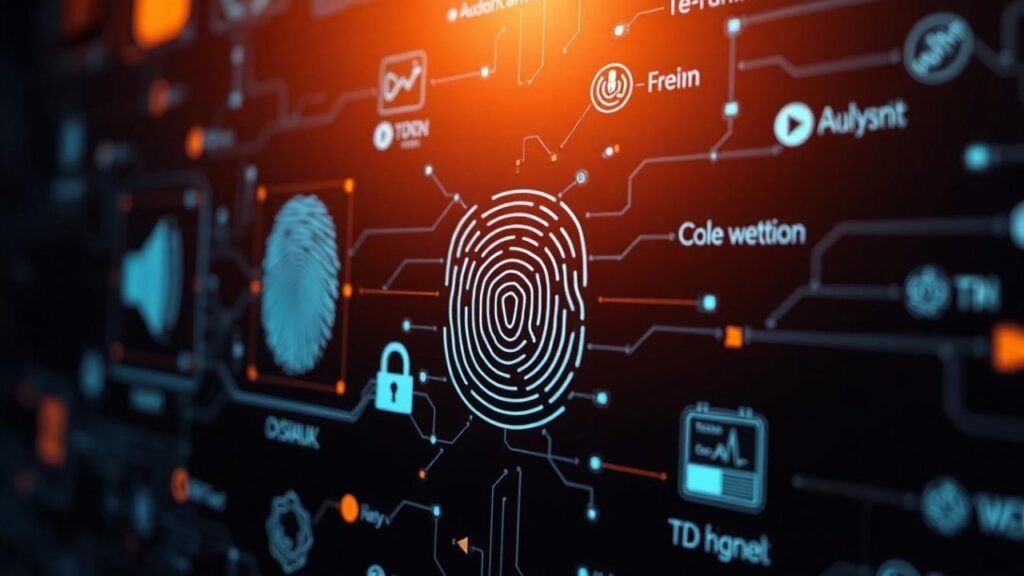Introduction: The Surging Value of Biometric Data
Biometric data—ever heard of it? It’s becoming more valuable than ever in the tech universe. Imagine unlocking your phone with your face. Yep, that’s biometric data for ya. These days, it’s not just a cool tech trick; this stuff is priceless. But, and there’s always a but, all these perks come with some risks. Think about it: someone out there could impersonate you with just a fingerprint. Creepy, right? Knowing its role and the possible pitfalls is pretty darn important.
Understanding the Role of Biometric Data in Digital Identity
What’s all the fuss about biometric data and digital identity? To break it down, biometric data is how our physical selves connect to the digital realm. It’s like your own VIP key to the online world—ideal for smooth phone unlocks or zipping through airport lines. Unlike pesky passwords you can never remember, your biometrics are always on hand. A fingerprint or even a cheeky smile can be way more secure than remembering a bunch of passwords.
Gotta admit, the perks are impressive. Picture this: no more password struggles, just a friendly wave. Companies, from mobile brands to airports, are riding this wave for solid authentication. Economically, it’s a smart move too! No more “forgot password” emails flooding your inbox—thank goodness!
Privacy Concerns and Ethical Considerations
Okay, let’s chat about privacy—it’s a biggie in the biometric world. Once your biometric data’s out there, it’s tough to change—unlike a password. Ethical minefields? You bet. If misused, biometric data can be a privacy disaster, like handing a stranger the keys to your digital life. Secondary terms like information security and data protection are key players here.
And what about the whole ‘Big Brother’ situation? Is everyone okay with our moves being tracked? The aim is usually security, but where do we draw the line between being protected and being watched? With biometric data becoming this crucial, striking a balance is vital.
The Threat of the Biometric Black Market
Imagine this: a shadowy black market trading biometric data—it’s like a spy movie come to life! Those dark web corners are swapping your precious info like currency. Remember that BioStar 2 breach? It spilled iris scans and fingerprints galore, a hacker’s dream come true.
This illegal trade puts identities at risk, with massive implications. If cyber-crooks nab your fingerprints, it’s no sci-fi tale—it’s the real deal. For people and businesses, not handling this right could cost billions. Unlike a stolen password, compromised biometric data is a nightmare to fix.
Ensuring Data Security and Regulatory Compliance
Businesses need to step up as protectors of our biometric data. This means solid data security strategies and meeting regulatory milestones. Ever heard of GDPR? It’s a powerhouse ensuring our data’s kept in check.
But is that enough? Debates rage on. For some peace of mind, cybersecurity best practices—top-notch encryption, regular check-ups—are non-negotiable. It’s all about trust; cutting corners just won’t do. Discover more about data privacy guidelines to stay ahead in this race.
The Future Outlook for Biometric Authentication
What’s next for biometric authentication? It’s looking like a future where digital ID checks are as normal as breathing. Get ready for tech leapfrogs like voice and heartbeat ID—it’s sci-fi stuff becoming reality! But with high-tech come high-tech hacks. Cyber experts and hackers are in a never-ending chase.
And laws? As biometric tech becomes everyday, new rules and ethical standards are on the horizon. Staying in step with tech while keeping privacy at the forefront is essential.
Conclusion: Balancing Benefits and Risks of Biometric Data
In a nutshell, biometric data is a game-changer for simplifying and securing our lives. But remember, with great power comes great responsibility. Wise use and strong data guards are a must. The chat on biometric data is only just beginning, and it’s ours to keep alive.
Let’s welcome these advances while safeguarding our very essence. After all, it’s not just data—it’s a part of us.


